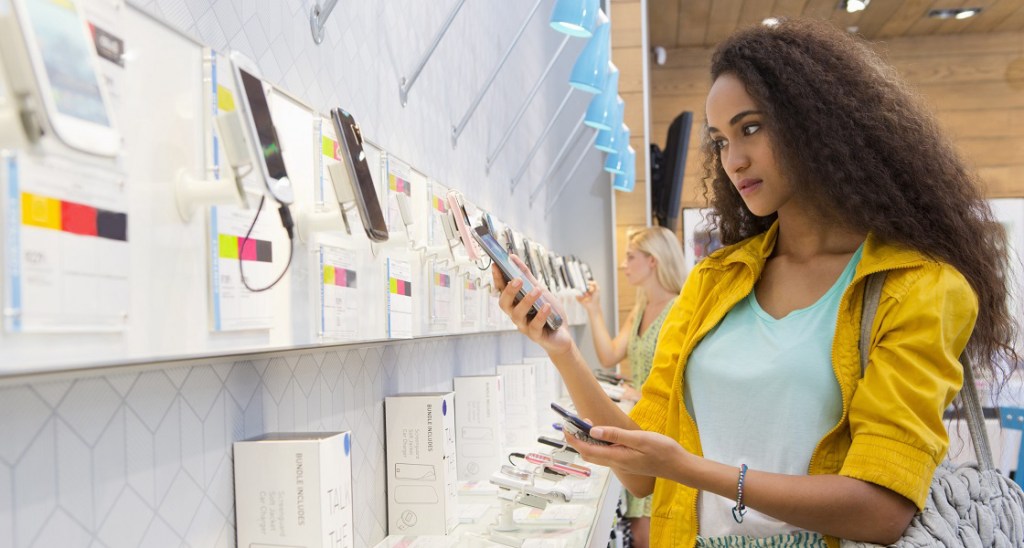Resources
1. From slowdown to stabilization: global retail trends in Consumer Technology and Durables
This year marks a turning point for Consumer Technology and Durables.
Following the pandemic boom of 2020 and 2021, in which the sector saw record sales as consumers worked, cooked and sought entertainment at home, the industry has faced a raft of challenges.
There are various factors that have influenced consumer confidence and willingness to spend, including:
- Rising cost of food, energy and fuel – sparking a cost of living crisis
- The ongoing war in Ukraine
- Real income stagnation
Coupled with saturation in parts of the Consumer Technology and Durables sector, with many consumers having moved purchases forward during the pandemic, prospects for growth in the coming 12 months are proving an uphill climb for manufacturers and retailers.
However, there are early indicators of a positive change on the horizon, with some regions benefiting from a gradual stabilization in consumer prices and a minor easing of inflationary pressures in December 2022.
This has led to differing economic forecasts for 2023, depending on the region. For Europe, 100% of chief economists still predict weak economic growth, while 91% do so for the United States. That contrasts sharply with South Asia, where only 15% of economists predict weak growth, and Middle East and North Africa, where 30% do so.
There is also a knock-on impact on consumer confidence in those regions seeing greater stabilization, such as India.
Though challenges remain, the industry could see the market shift slowly from deceleration to stabilization in the coming months.
For both manufacturers and retailers that sets up brand new opportunities to seize in 2023. Carving out creative ways to leverage promotions and communications, address inventory backlogs and market products can put them on the right trajectory.
This whitepaper will explore how to leverage each one of these opportunities, looking at
- Making the most of a shift from deceleration to stabilization
- Proactive planning for rising relevance of promotions
- Rethinking premiumization
- Creating needs-based innovation
- Pairing sustainability with value-led propositions for consumers
- Targeting emerging markets with high growth potential
2. Carving solutions from setbacks: how retailers can leverage a global shift toward stabilization
Though market conditions are showing signs of stabilization in 2023, Consumer Technology and Durables retailers will need to work harder to secure growth in the year ahead.
Here are key areas where business decision-makers face challenges and how they can carve out opportunities.
2.1. Seize opportunities amid market stabilization by optimizing value
Slow shift to market stabilization
For online retailers, the impact of the 2022 Consumer Technology and Durables market slowdown has been further exacerbated by a shift in shopping trends and behaviors post-pandemic. Following a boom in ecommerce during Covid-19, consumers have returned to physical stores at a greater rate than expected with some demographics, particularly younger consumers, regarding in-person shopping as a valued entertainment experience.
Given these multifaceted retail trends, it’s unsurprising that the extent of this slowdown in sales has varied considerably by region.
A slow global shift to stabilization, though, signals the ideal opportunity for business decision-makers to harness retail insights and seek new opportunities to recover growth in the coming year and beyond.
Get to grips with changing consumer sentiment to deliver value
Amid this still challenging economic climate, many consumers are seeking value-led propositions from retailers in Consumer Technology and Durables.
To adapt to this retail trend, it’s critical that businesses first utilize data to get to grips with evolving consumer behaviors.
In a world that is rapidly changing, we cannot rely any longer only on sensations and visions. Each decision should be based and supported by concreteness, and only facts and numbers can give us evidence.
Stefano Polla, Commercial Director at Euronics Italy
Rather than assuming a one-size-fits-all approach, break consumer segments down by age, income and geography to build up a nuanced picture of what value means to different demographics.
Armed with this retail insight, teams may re-evaluate their geographical focus, exploring the potential in untapped emerging markets.
Millennials and higher earners are the most likely to put off purchases and trade down from name brands
Source: GfK Consumer Life Global 2022
They may also wish to revisit their product mix with the aim to balance assortments, which can help ease inventory backlogs by utilizing a diverse range of products. This approach can also optimize margins using selected premium tier products, while ensuring traction with consumers who are less able to splash out by incorporating the right low and mid-tier options.
Ensure maximum value from store space too, by showcasing brands rather than an entire range. To mitigate less inventory, utilize kiosks creatively to showcase additional products or stock related models and explain key differences clearly. Then offer quick delivery options on those models not held in store, so consumers can test at home.
There are also a number of ways retailers could combat the threat from brands selling direct to consumers:
- Stock lesser-known low and mid-tier brands which provides greater negotiating power to protect margins while providing a similar selection for consumers.
- Consider developing private-label ranges that enable retailers to leverage their volumes and brand trust to quickly capture interest, while using insight from other brands’ performance to tailor their strategy. It’s a trend already proving popular across retailers in Latin America and Asia-Pacific.
- Offer additional services, such as logistics or media, to those brands with a direct-to-consumer model so as not to lose their brand assortment entirely.
Aside from product, retailers can also review payment options to bolster their value-led proposition. This may include offering payment installment options or interest-free credit, with “buy now, pay later” services already taken advantage of by one in five global consumers.2 For purchases in Q4 2022, 19% of consumers said the availability of financing options was a purchase driver, a figure that rises significantly for certain categories, such as laptops at 32%. 3
2 GfK Consumer Life Shoppers of the World 2023
3 gfknewron Consumer Intelligence
2.2. Optimize promotions with deals that protect margins
Managing promotions amid rising costs
This ongoing pressure on household budgets in many regions means consumers are likely to postpone purchases until major promotional events in 2023 to take advantage of discounts, particularly as prices remain higher on average compared to pre-pandemic.
The extent of this varies by region. In China, an uplift in promotional activity is expected to be particularly strong given growing domestic demand following an end to pandemic restrictions.
For retailers where there is an intensification of promotional activity, this trend not only requires significant investment and pre-planning to optimize promotional events, but it can also further erode margins.
This can be particularly challenging given rising fixed costs for rent, energy and wages. For one multinational consumer electronics retailer, strong turnover in 2022 was undermined by margins that had fallen below 1%, partly as a result of these market conditions.
Optimize promotions and protect the bottom line
There are ways, though, in which retailers can minimize the impact of increased promotional activity on margins and optimize sales uplift by tapping into retail insights.
- Move away from loss-leaders and focus on more meaningful promotions that minimize loss of margin, by balancing promoted items to target both ends of the consumer spectrum.
- Adapt to changing retail trends in purchasing behaviors across low and medium-earners with affordable options, while also encouraging those consumers less financially impacted to use promotional events to upgrade, offering smaller discounts on premium tier products.
- Remember that promotions don’t always require straight discounts. Value can also be offered by offering consumers bundles or value packs that group together a main device along with related accessories for a lower price than if they had been sold separately.
2.3. Expand innovation strategies to meet consumer needs
Lack of appetite for incremental changes
Despite strong economic headwinds shaping consumer behavior, innovation will remain a key global trend in retail and driver of growth in 2023 and beyond.
However, retailers should expect a higher bar. Across many categories within Consumer Technology and Durables, high rates of purchases made during the pandemic has led to a level of saturation and therefore a high threshold for innovation compelling enough to cut through.
Incremental improvements, such as tweaks to screen resolution or storage capacity, won’t be enough to encourage many consumers to splash out. This creates a challenge for retailers to identify and offer bold and meaningful product innovation in stores.
Match innovation to consumer insight
To achieve this, businesses need to make decisions based on the latest retail insights, adapting product assortments to include innovation that most taps into current consumer needs.
This may mean expanding into product areas historically out of scope, such as DIY, power tools or emobility devices. Or proactively seeking out emerging trends, for example air fryers have seen sales climb by 57% in 2022 and are now widely available, as a result of retailers building on fast-growing consumer appetite.
Innovation goes beyond products
Consider offering additional services, such as installation support, as a way to upsell. Margins that can be generated from ongoing service agreements often outstrip those of the original product itself, creating a highly profitable solution for retailers.
Focus on the in-store customer experience too. This is an element of the shopping journey increasingly prized by consumers.
The purpose of the store has changed. Retailers don’t need to carry full ranges in store anymore, their role is about brand and experience. These are touchpoints that, unlike products, cannot purely be fulfilled online. Stores are becoming more ‘social’, with different space utilization as a result: immersive areas, support and repair desks, community spaces and other leisure-related uses.
Michael McLaughlin, Vice President Global Retail at GfK
Online retailers can also explore this option, opening pop-ups or single flagship outlets to create the same customer experience, while transactions remain online.
For all retailers, omnichannel customer journeys remain a key trend and so ensuring store-led innovation merges the online and the offline is critical.
2.4. Champion sustainability to gain a competitive edge
Sustainability hasn’t wavered despite a tough economic climate
Though consumers are cutting back amid financial pressures, their purchase behavior remains shaped by environmental concerns.
Retailers in Consumer Technology and Durables face an uphill battle in achieving consumer trust on the issue, though.
Only one in ten brands are considered eco-friendly, with younger generations in particular skeptical of green claims. Even where sustainable features make a meaningful impact, it can be difficult to communicate this in a clear and accessible way for consumers, both in an online and offline environment.
In addition, retailers generate a large proportion of WEEE (waste electrical and electronic equipment) and are held responsible for addressing this across the life cycle of a product, including maintenance, repair and disposal.
Compounding this is the lack of a universal standard or “sustainability scale” by which retailers can measure their progress. This exacerbates existing skepticism around their claims and makes it more difficult for those retailers taking meaningful action to share progress.
2.5. Secure brand trust by building engagement across product life cycles
Although it creates challenges, consumer interest in sustainable products and brands also creates opportunities for retailers to seek out new avenues for growth. Global demand for refurbished and secondhand products is a retail trend they could leverage, for example. This is reflected across all regions.
Refurbished and used mobile phones market was valued at around $53.2bn in 2021 and is expected to reach $146.4bn by 2030
Source: Counterpoint Technology market research
It’s also important that retailers work to combat skepticism on their commitment to tackling environmental impact.
There are a number of ways retailers might do this:
- Engage with consumers across the life cycle of a product to nudge sustainable behaviors, such as offering support on repairs rather than selling a replacement.
- Consider selling spare parts or recommend accessories that can upgrade customer experience without requiring a new device.
- Offer additional services that ensure safe disposal and/or recycling.
Online retailers should ensure this extends to packaging and delivery. For example, avoid splitting an order for multiple products into separate deliveries and explain the carbon-footprint benefits for consumers.
For physical retailers meanwhile, invest in training for staff so they can better communicate the eco-credentials of products and their benefits to customers on the shopfloor, and in doing so encourage those who may have been unconvinced to pay more for a more sustainable performance.
Couple this with easy-to-understand product labels that work to highlight green features and how these benefit both the planet and consumers. For example low energy consumption, which reduces environmental impact as well as household bills.
Seize solutions in a challenging climate
There is no doubt that retailers in Consumer Technology and Durables are facing a period of significant challenges. Nevertheless, there are numerous opportunities to seize growth where retailers are willing to leverage data-driven decisions and create insight-led strategies.
With its wide range of product solutions, GfK is uniquely positioned to support retailers and manufacturers on this journey.
Authors

Namrata Gotarne
Global Strategic Insights

Michael McLaughlin
Vice President Global Retail





